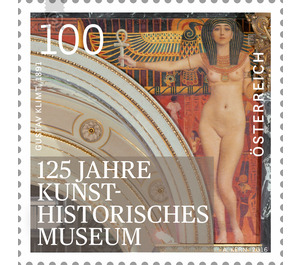125 years - Austria / II. Republic of Austria 2016 - 100 Euro Cent
Theme: Art & Culture
| Country | Austria / II. Republic of Austria |
| Issue Date | 2016 |
| Face Value | 100.00 |
| Edition Issued | 170,000 |
| Printing Type | offset |
| Stamp Type | Commemorative |
| Item Type | Stamp |
| Chronological Issue Number | 2591 |
| Chronological Chapter | OOS-OE2 |
| SID | 395475 |
| In 73 Wishlists | |
Whether Caravaggio's "Rosenkranzmadonna", Rubens's "The Fur", Raphael's "Madonna in the Green", Bruegel's "Country Wedding", Arcimboldo's "Summer" or Vermeer's "The Art of Painting" - countless are the important paintings by the Vienna Kunsthistorisches Museum, or KHM for short , houses. The Kunstkammer, newly opened in 2013 after a long renovation, as well as the Egyptian-Oriental and other collections also have many treasures on offer. In 2016, the house, one of the most visited attractions in Vienna, celebrates its 125th anniversary. It was on October 17, 1891, when Emperor Franz Joseph I solemnly opened the newly constructed building, which was to merge the collections of the Imperial House and from then on to be presented to the public. Since then, the Kunsthistorisches Museum has been one of the most important museums in the world. In the course of the ring road design, the house was designed by the architects Gottfried Semper and Carl von Hasenauer, and construction began in 1871. At the beginning the house was called Kunsthistorisches Hofmuseum, then Kunsthistorisches Staatsmuseum Wien, since 1921 it bears the current name. After the expropriation of the House of Habsburg-Lorraine, the collections of the KHM went into state ownership and were rearranged. While after the First World War, works had to be handed over to some of the successor states of the monarchy, from 1938 to 1945, some from Jewish collections were added. These are still being tested for their provenance in restitution proceedings. - From 8 March to 18 September 2016, works from the museum's collections will be on display, including feasts, coronations, dance festivals, weddings, carnivals and more.


